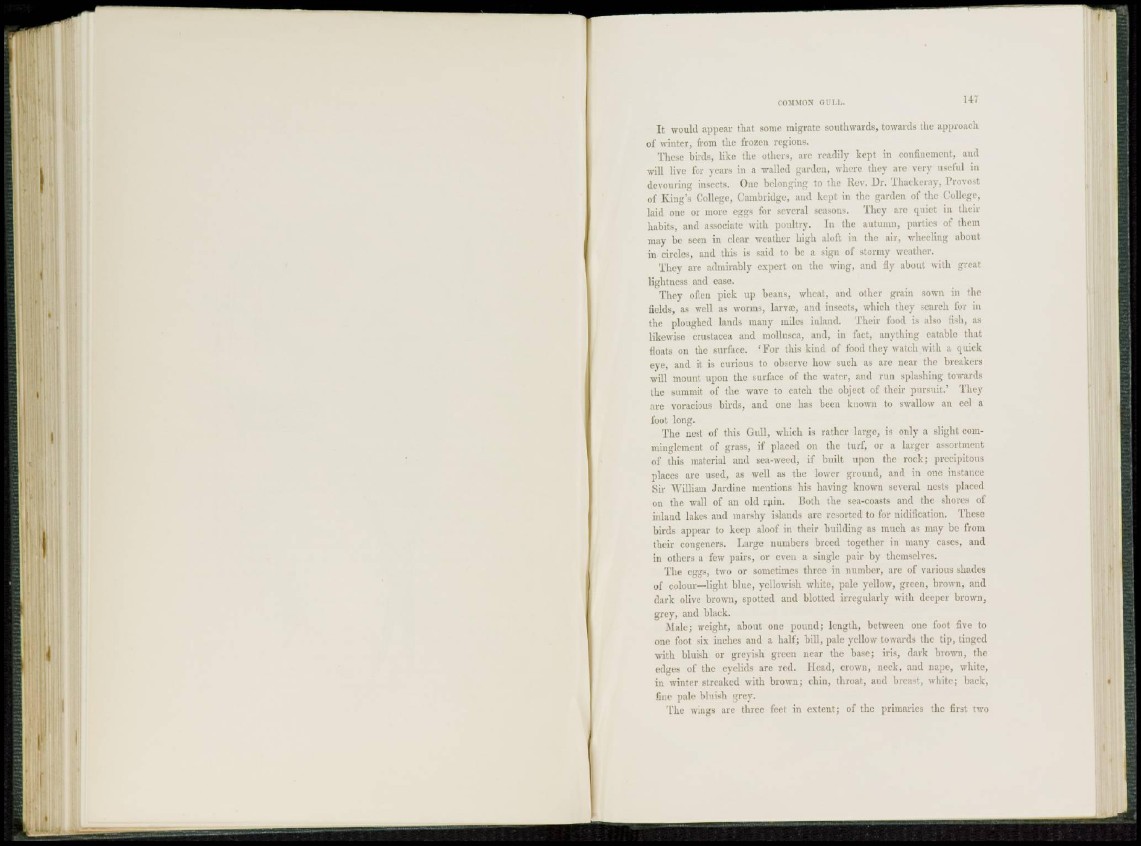
COMMON GULL. 147
I t would appear that some migrate southwards, towards the approach
of winter, from the frozen regions.
These birds, like the others, are readily kept in confinement, and
will live for years in a walled garden, where they are very useful in
devouring insects. One belonging to the Rev. Dr. Thackeray, Trovost
of King' s College, Cambridge, and kept in the garden of the College,
laid one or more e g g s for several seasons. They are quiet in their
habits, and associate with poultry. In the autumn, parties of them
may be seen in clear weather high a l o f t in the air, wheeling about
in circles, and t h i s is said t o be a sign of stormy weather.
They are admirably expert on the wing, and f l y about with great
lightness and ease.
They often pick up beans, wheat, and other grain sown in the
fields, as well as worms, larva?, and insects, which t h e y search for in
the ploughed lands many miles inland. Their food i s a l s o fish, as
likewise C r u s t a c e a and mollusca, and, in fact, anything eatable that
floats on the surface. 'For this kind of food they watch with a quick
eye, and it is curious to observe how such as are near the breakers
will mount upon the surface of the water, and run splashing towards
the summit of the wave to catch the object o f their pursuit.' They
are voracious birds, and one has been known to swallow an eel a
foot long.
The nest of this Gull, which is rather large, is only a slight comminglcment
of grass, if placed on the turf, or a larger assortment
of this material and sea-weed, if built upon the rock; precipitous
places are used, as well as the lower ground, and in one instance
Sir William Jardine mentions his having known several nests placed
on the wall of an old ruin. Both the sea-coasts and the shores of
i n l a n d lakes and marshy islauds arc resorted to for nidification. These
birds appear to keep aloof in their building as much as m a y be from
their congeners. Large numbers breed together in many cases, and
in others a few pairs, or even a single pair by themselves.
The eggs, two or sometimes three in number, arc of various shades
of colour—light blue, yellowish white, pale yellow, green, brown, and
dark olive brown, spotted and blotted irregularly with deeper brown,
grey, and black.
-Male; weight, about one pound; length, between one foot five to
one foot six inches and a half; b i l l , pale yellow towards the tip, tinged
with bluish or greyish green near the base; iris, dark brown, the
edges of the eyelids are red. Head, crown, neck, and nape, white,
in winter streaked with brown; chin, throat, and breast, white; back,
fine pale bluish grey.
The wings are three feet in extent; of the primaries the first two